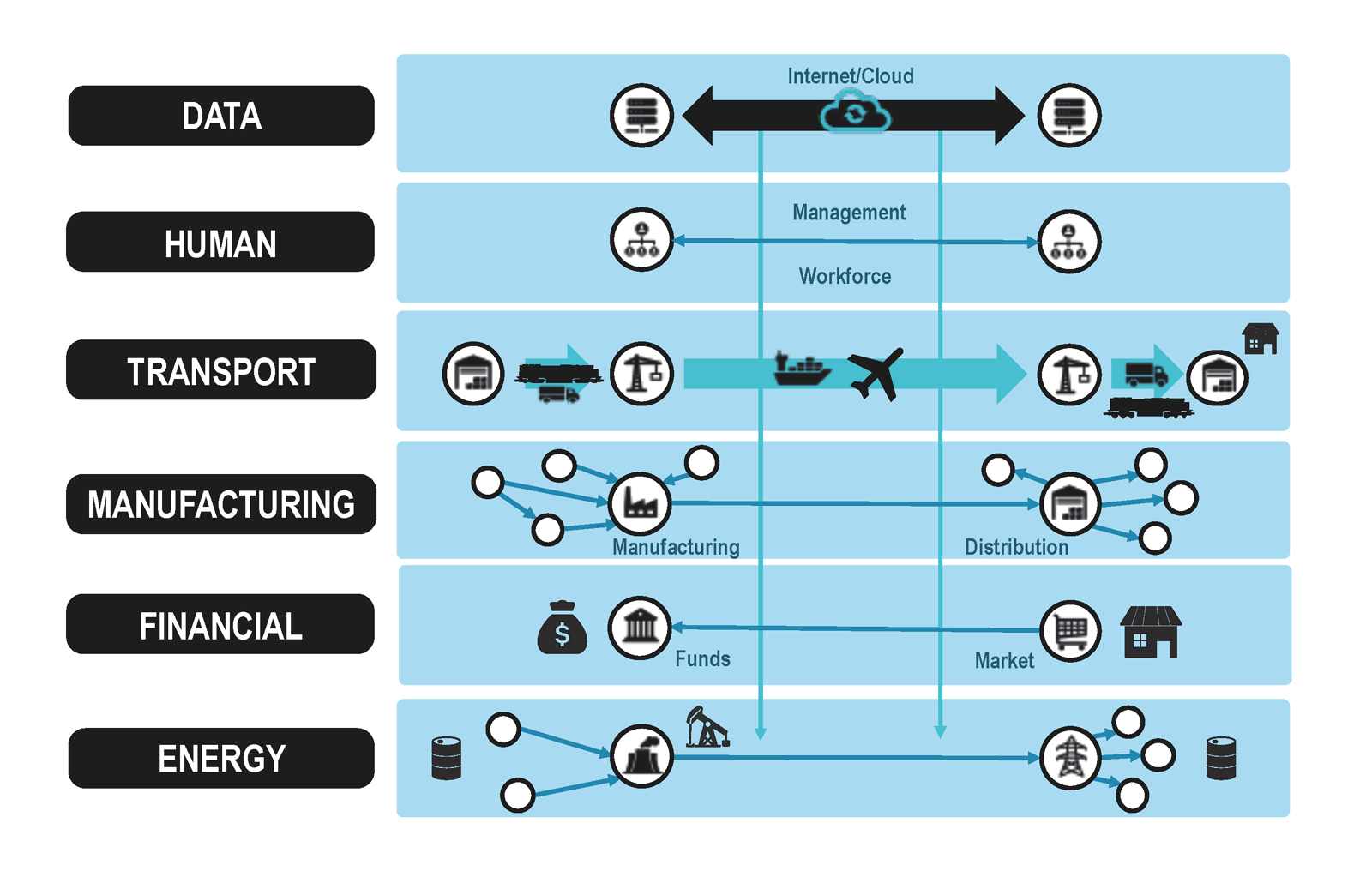Ports are connectors within supply chains and the interface of two systems of circulation. The first is the shipping network and its trade connectivity; and the second is the port hinterland with its commercial accessibility. Port-centric logistics, energy production and manufacturing can be considered as the third element of the port interface (figure 4).
Figure 4: The port interface: The hinterland and the foreland

The port interface underlines the potential for propagation and back-propagation effects, which can also be referred to as a network contagion effect. The port is part of a complex network that includes information systems, workforce, supply chains, carrier services, financial transactions, and energy provision. The manner in which a port is embedded within these networks is an essential component of its resilience. A failure in one network can have substantial impacts on others networks and shape the feedback over a given port.
The logistics network, including shipping, ports and their hinterland interacts with other networks such as labour, energy and technology (figure 5). A failure of one network can have catastrophic implications for another. ‘Risk propagation’ associated with network and compound risks, as detailed further below in this guidebook, entail ripple effects within and across networks i.e. including not only up and down the logistics ‘plane’ (shipping network, port level, hinterland) but also on a cross-network basis.
Figure 5: Networks and related risks

Source: Manners-Bell J. (2022).
